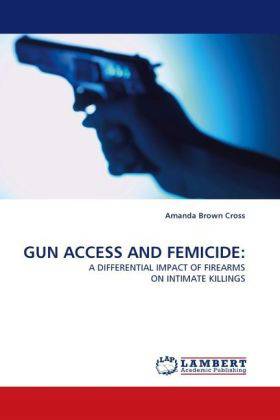
- Afhalen na 1 uur in een winkel met voorraad
- Gratis thuislevering in België vanaf € 30
- Ruim aanbod met 7 miljoen producten
- Afhalen na 1 uur in een winkel met voorraad
- Gratis thuislevering in België vanaf € 30
- Ruim aanbod met 7 miljoen producten
Zoeken
GUN ACCESS AND FEMICIDE:
A DIFFERENTIAL IMPACT OF FIREARMS ON INTIMATE KILLINGS
Amanda Brown Cross
Paperback | Engels
€ 48,45
+ 96 punten
Omschrijving
Studies of intimate partner homicide have repeatedly suggested that gun accessibility increases the risk that a confrontation between intimates will end in the death of one partner, usually the woman. In the larger arena of gun accessibility research, experts have posited opposing conclusions about how gun accessibility affects the risk of homicide in the population overall. This thesis is an attempt to build a bridge between literature linking gun access to increased intimate partner homicide and literature exploring the effect of gun availability on homicide in general. Based on previous research, the current study poses the two hypotheses: (I) Gun accessibility is a stronger predictor of intimate partner homicide than non- intimate partner homicide and (II) Gun accessibility is a stronger predictor of intimate partner homicide of women than intimate partner homicide of men. My analysis is consistent with hypothesis II and offers no support for hypothesis I.
Specificaties
Betrokkenen
- Auteur(s):
- Uitgeverij:
Inhoud
- Aantal bladzijden:
- 60
- Taal:
- Engels
Eigenschappen
- Productcode (EAN):
- 9783838333328
- Uitvoering:
- Paperback

Alleen bij Standaard Boekhandel
+ 96 punten op je klantenkaart van Standaard Boekhandel
Beoordelingen
We publiceren alleen reviews die voldoen aan de voorwaarden voor reviews. Bekijk onze voorwaarden voor reviews.











